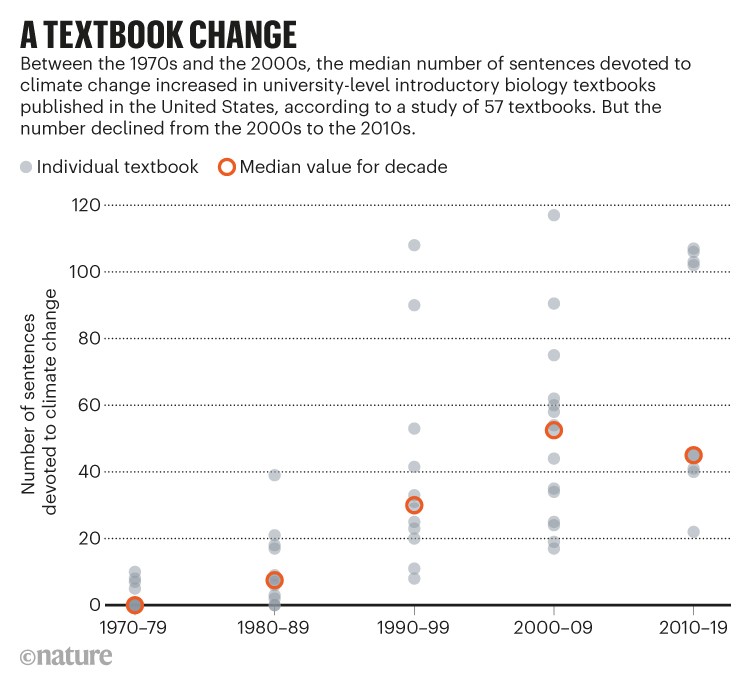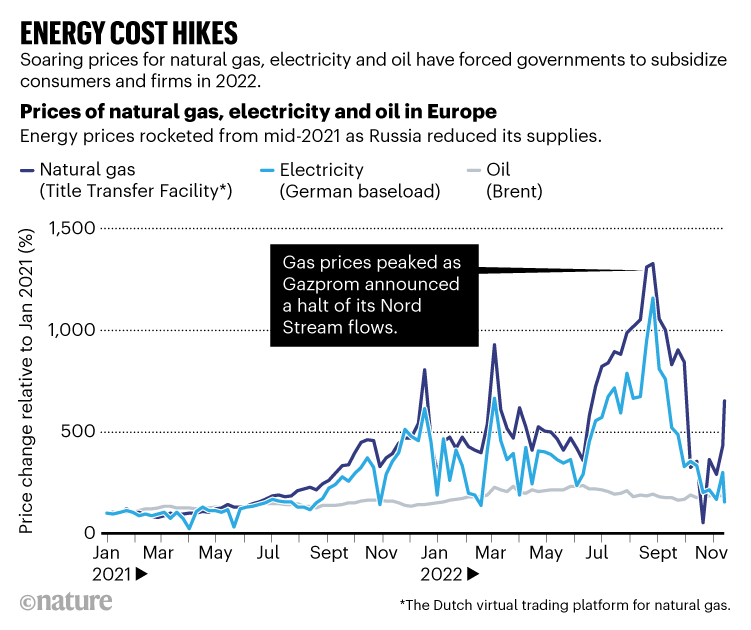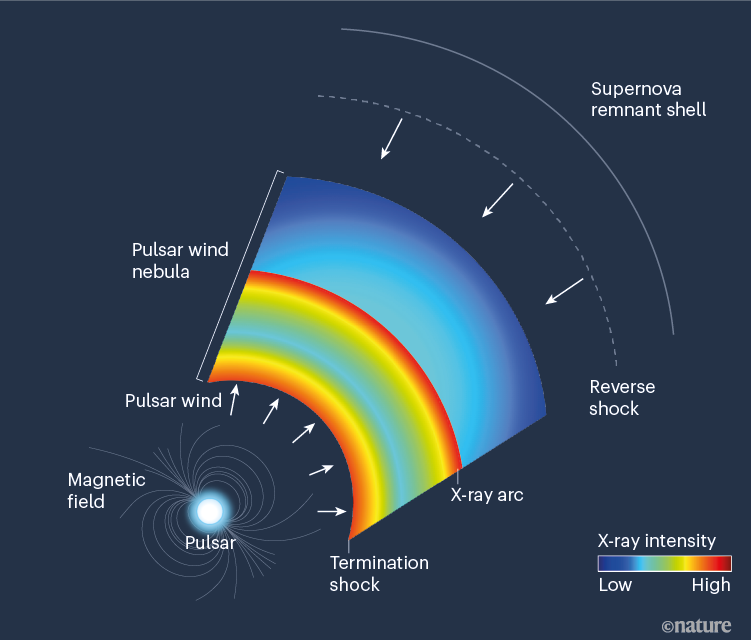Climate-change content shrinks in textbooks
Table of Contents
University biology textbooks published in the United States in the 2010s contained less climate-change content than those published in the 2000s, despite increasing attention to the climate crisis. Researchers also found that passages on climate change moved farther back in the books. The finding emerged from a survey of widely used biology textbooks from the past 50 years.

Source: R. A. Ansari & J. M. Landin PLoS ONE 17, e0278532 (2022)
The energy cost roller coaster
This graph shows how energy prices changed dramatically in 2022. In response to Russia’s invasion of Ukraine last year, Western countries imposed financial sanctions on Russia and embargoed its oil exports. Russia cut its gas supplies to Europe in retaliation. The energy crisis will have profound consequences for the world in 2023, as the authors of this Comment article explain.

Source: Bruegel
The wind that a star left behind
This graphic portrays the magnetic field left behind by a dead star. In the remnant of a supernova, the core of the dead star (a pulsar) emits a particle wind that gyrates within a magnetic field that is typically doughnut-shaped, and accelerates the particles to ultra-high energies, generating a gas cloud called a pulsar wind nebula. The onset of the wind is known as the termination shock; the reverse shock acts in the opposite direction as the nebula ages. The magnetic field causes particles to emit radiation, and emission with X-ray wavelengths is visible as arcs that can indirectly reveal the shape of the field.
The authors of a paper in Nature used X-ray emission data from the Vela pulsar wind nebula to infer the geometry of its magnetic field, which has a symmetrical and surprisingly highly ordered structure. The work could help to shed light on why these nebulae are among the most powerful particle accelerators in the Universe.

